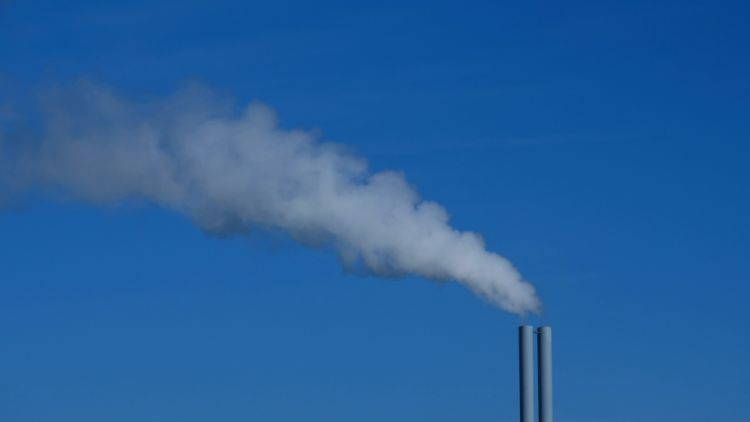The greenhouse effect is a natural process that warms the Earth’s surface. It occurs when greenhouse gases (GHGs) in the Earth’s atmosphere trap the Sun’s heat, preventing it from escaping back into space. This process maintains the Earth’s temperature at a level necessary to support life. However, human activities, primarily the burning of fossil fuels, have intensified this effect, leading to global warming and climate change.
How the Greenhouse Effect Works
The Earth receives energy from the Sun in the form of solar radiation. About 30% of this energy is reflected back into space by clouds, ice, and other reflective surfaces. The remaining 70% is absorbed by the Earth’s surface, which heats up. To balance this incoming energy, the Earth’s surface radiates energy back into space in the form of infrared radiation. However, greenhouse gases, such as carbon dioxide (CO₂), methane (CH₄), and water vapor, absorb some of this infrared radiation and trap it in the atmosphere, warming the planet.
This natural greenhouse effect is essential for maintaining a climate that supports life. Without it, Earth’s average temperature would be about -18°C (0°F), far too cold to sustain human life as we know it. However, increased levels of greenhouse gases from human activities are strengthening this effect, trapping more heat and causing the Earth’s average temperature to rise(NASA Science).
Major Greenhouse Gases and Their Sources
Greenhouse gases are released through a variety of human activities, most notably the burning of fossil fuels, deforestation, and certain agricultural practices. Here are some of the main contributors:
- Carbon Dioxide (CO₂): The most significant greenhouse gas, CO₂ is primarily released by burning fossil fuels such as coal, oil, and natural gas. It accounts for the majority of greenhouse gas emissions and has a long atmospheric lifetime, making it particularly impactful on climate change.
- Methane (CH₄): Although present in smaller amounts, methane is much more effective at trapping heat than CO₂. Methane emissions come from agricultural activities, landfills, and the production and transport of oil and gas.
- Nitrous Oxide (N₂O): This gas is released from agricultural activities and industrial processes, as well as from the combustion of fossil fuels and solid waste.
- Fluorinated Gases: These synthetic gases, used in various industrial applications, have a much higher global warming potential than CO₂, although they are released in smaller quantities. They can remain in the atmosphere for thousands of years(
Why the Greenhouse Effect Matters
The intensified greenhouse effect, driven by human activities, has led to a steady increase in global temperatures, a phenomenon commonly referred to as global warming. This warming has far-reaching consequences for ecosystems, weather patterns, sea levels, and human health.
1. Impact on Weather Patterns
Increased temperatures alter precipitation patterns, leading to more extreme weather events such as hurricanes, droughts, and floods. These changes disrupt agriculture, water supplies, and can lead to food shortages. The frequency and intensity of these weather events are predicted to increase as global temperatures continue to rise.
2. Rising Sea Levels
Global warming causes polar ice to melt and ocean water to expand. As a result, sea levels are rising, which threatens coastal communities worldwide. Small island nations and low-lying areas face a particularly high risk of flooding, which can displace populations and lead to significant economic losses.
3. Ocean Acidification
The ocean absorbs about 30% of the CO₂ emitted into the atmosphere. This absorption lowers the pH of seawater, a process known as ocean acidification. Acidification affects marine life, particularly organisms with calcium carbonate shells or skeletons, such as coral and some shellfish, disrupting entire marine ecosystems.
4. Impact on Biodiversity
As temperatures rise, habitats change, and species are forced to migrate or face extinction. This loss of biodiversity can have cascading effects on ecosystems and reduce their resilience. For example, many plant and animal species are unable to migrate quickly enough to keep pace with the changes, leading to an imbalance in ecosystems and further loss of biodiversity.
How We Can Mitigate the Greenhouse Effect
There are several strategies to mitigate the greenhouse effect, primarily by reducing the amount of greenhouse gases we emit:
- Transitioning to Renewable Energy: Switching to renewable energy sources such as solar, wind, and hydropower can reduce our reliance on fossil fuels. Renewable energy production releases little to no greenhouse gases and is key to lowering global emissions.
- Improving Energy Efficiency: Using energy more efficiently can significantly reduce greenhouse gas emissions. This includes actions like improving home insulation, using energy-efficient appliances, and reducing energy waste in industrial processes.
- Promoting Sustainable Agriculture and Forestry: Agricultural practices, such as crop rotation and reducing the use of nitrogen-based fertilizers, can lower emissions. Additionally, forests play a critical role in sequestering carbon dioxide, so protecting forests and reforesting can help mitigate climate change.
- Supporting Carbon Capture and Storage: Technologies that capture CO₂ emissions from power plants and other industrial sources before they reach the atmosphere are becoming increasingly viable. These captured emissions can be stored underground or even reused in various applications.
- Reducing Waste: Proper waste management and reducing the amount of waste produced can reduce methane emissions from landfills. Composting organic waste and recycling can also reduce the need for waste incineration, which releases CO₂.
- Adopting a Plant-Based Diet: The production of meat, especially beef, generates significant greenhouse gas emissions. By reducing meat consumption or adopting a plant-based diet, individuals can contribute to lower emissions(
Conclusion
Understanding the greenhouse effect is crucial in recognizing the impact of human activities on our planet’s climate. While the greenhouse effect is a natural and necessary process, human actions have intensified it, leading to global warming and numerous associated challenges. Mitigating this effect requires collective action, including adopting renewable energy, enhancing energy efficiency, and making sustainable lifestyle choices.
By addressing the root causes of greenhouse gas emissions, we can work towards a more sustainable future and help to stabilize the Earth’s climate for generations to come. For more detailed information on the greenhouse effect, you can explore NASA’s explanation and learn about specific greenhouse gases on the EPA’s website.

